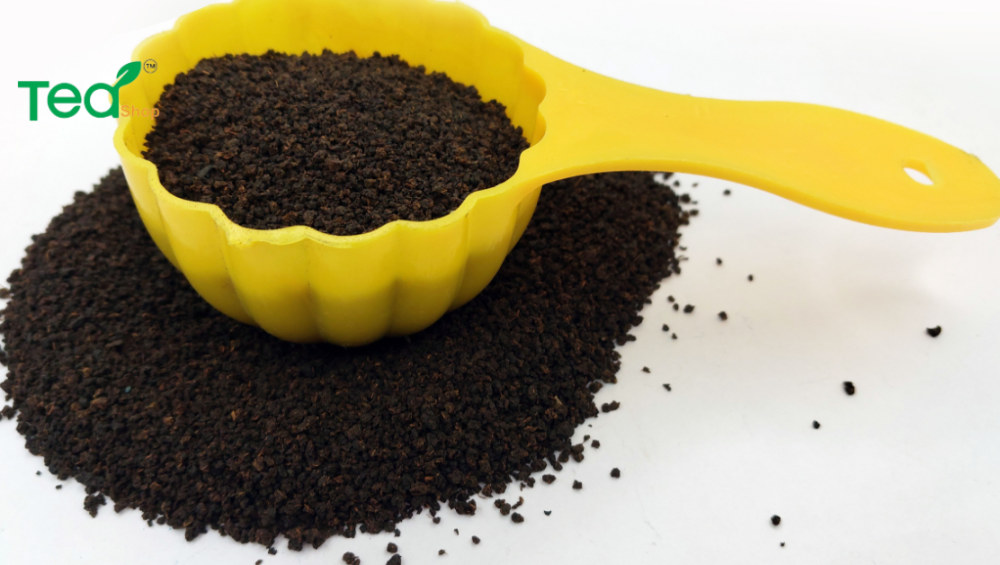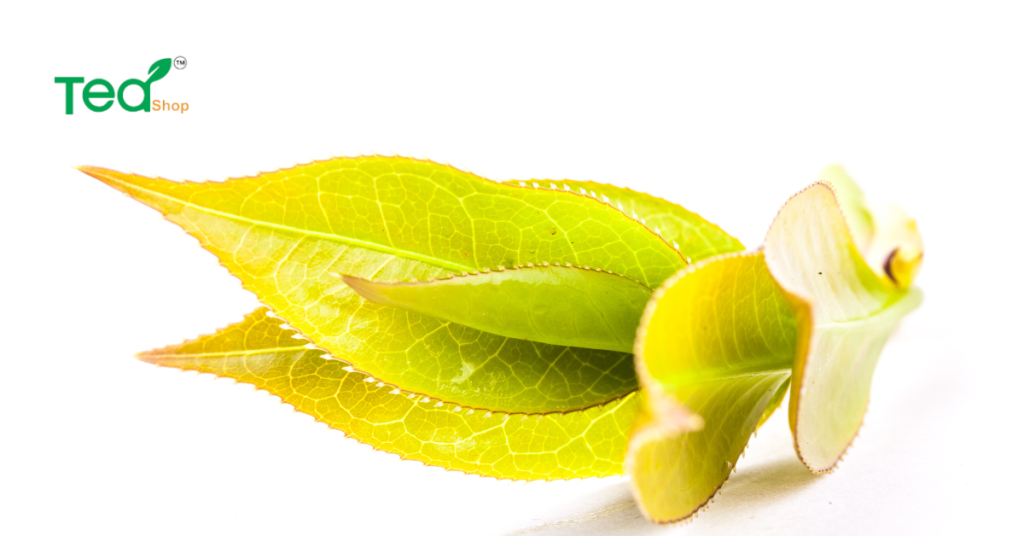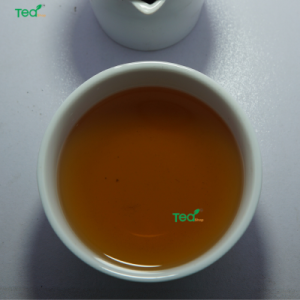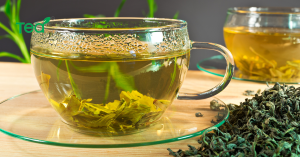Leaf Tea
Leaf teas refer to teas that are made from the leaves of the Camellia sinensis plant, also known as the tea plant. Some of the most popular types of leaf teas include:
- Black tea: Black tea is fully oxidized and has a strong, bold flavor. It is often consumed with milk and sugar and is popular in the form of blends like English Breakfast and Earl Grey.
- Green tea: Green tea is minimally oxidized and has a lighter, more delicate flavor than black tea. It is often consumed plain and is prized for its health benefits, including its high antioxidant content.
- Oolong tea: Oolong tea falls between black and green tea in terms of oxidation, giving it a flavor that is somewhere between the two. It is often consumed plain and is popular in China and Taiwan.
- White tea: White tea is the least processed of all teas and has a delicate, slightly sweet flavor. It is made from young tea leaves and buds and is prized for its high antioxidant content.
Leaf teas are usually enjoyed as a hot beverage, but some can also be enjoyed cold. Regardless of the type, a leaf tea is a staple in many cultures around the world and is enjoyed for its taste and health benefits.
Leaf Tea Overview
Leaf tea is a type of tea that is made from the leaves of the Camellia sinensis plant. The processing and preparation of the tea leaves determine the final flavor and type of the tea. Leaf tea is widely popular and consumed all over the world and is available in a variety of different blends and flavors.
The four main types of leaf tea are black, green, oolong, and white. Black tea is fully oxidized and has a strong, bold flavor. Green tea is minimally oxidized and has a lighter, more delicate flavor. Oolong tea falls between black and green tea in terms of oxidation, giving it a flavor that is somewhere between the two. White tea is the least processed of all teas and has a delicate, slightly sweet flavor.
In addition to its taste, leaf tea is often consumed for its potential health benefits. Many types of leaf tea contain antioxidants, which can help to protect against damage from free radicals and may have other health benefits as well. Leaf tea is also a source of caffeine, which can help to improve alertness and focus.
Leaf tea is usually prepared by steeping dried tea leaves in hot water. The water temperature and steeping time can vary depending on the type of tea being prepared. Leaf tea can be enjoyed on its own or with the addition of sweeteners or milk, depending on personal preference.
Overall, leaf tea is a versatile and popular beverage that is enjoyed for its taste and health benefits. Whether you prefer a bold black tea or a delicate white tea, there is a leaf tea out there to suit your taste.
Leaf Tea In Bangladesh
Leaf tea is a popular beverage in Bangladesh and is an important part of the country’s economy and culture. Bangladesh is a major producer of tea and exports a significant amount of its tea production to other countries.
Black tea is the most widely consumed type of leaf tea in Bangladesh and is often consumed with milk and sugar. The tea is usually prepared in a traditional manner, known as “Bangladeshi style,” which involves boiling the tea leaves with water and milk until a strong, dark brew is achieved. This style of tea preparation is also known as “chai” in other parts of South Asia.
In addition to its consumption as a beverage, tea is also an important part of Bangladeshi social and cultural traditions. Drinking tea is a common social activity and is often served during gatherings with friends and family. The tea trade is also a major source of employment in Bangladesh, providing livelihoods for many people in the country, particularly in rural areas.
Overall, leaf tea plays a significant role in the economy and culture of Bangladesh. Whether enjoyed as a hot beverage or as part of a social gathering, tea is an important part of everyday life for many people in the country.
CTC Leaf Tea
CTC (Crush, Tear, and Curl) is a method of processing black tea that results in a strong, bold flavor and a smaller, more uniform leaf size. The CTC method involves grinding the tea leaves into small pieces, which allows for a faster and more complete oxidation process. This results in a tea that is well-suited for use in tea bags, as the smaller size allows for maximum extraction of flavor when steeping.
The CTC method of tea processing is widely used in the tea industry and is particularly popular in India and other parts of South Asia, where it is used to produce the strong, robust tea that is favored in the region. CTC tea is often consumed with milk and sugar and is popular for its bold, full-bodied flavor.
In addition to its use as a beverage, CTC tea is also used in the production of tea blends and other tea products, such as masala chai and tea-based drinks.
Overall, CTC leaf tea is a versatile and popular type of tea that is widely consumed and enjoyed for its strong, bold flavor and convenient preparation. Whether enjoyed on its own or as part of a blend, CTC tea is an important part of tea culture and commerce around the world.
Leaf Tea Price In Bangladesh
The price of leaf tea in Bangladesh can vary widely depending on several factors, including the type of tea, the region it is grown in, the quality of the tea, and the time of year.
In general, black tea, which is the most widely consumed type of tea in Bangladesh, can be purchased for as little as a few taka per kilogram up to several hundred taka per kilogram for high-quality, premium teas. The average price for a kilogram of black tea in Bangladesh is around 50-100 taka.
The price of tea can also be influenced by the time of year, with prices often rising during the tea-picking season when supply is limited and demand is high.
In addition to the price of tea, other factors such as transportation costs and taxes can also impact the overall cost of tea in Bangladesh.
Overall, the price of leaf tea in Bangladesh can vary widely, but it is generally considered to be an affordable and accessible beverage for many people in the country.
Leaf Tea Grade In Bangladesh
Leaf tea in Bangladesh is usually graded based on several factors, including the size and quality of the leaves, the degree of oxidation, and the overall flavor and aroma of the tea. The grades of tea in Bangladesh are typically determined by the Bangladesh Tea Board, which sets standards for the industry.
The grades of tea in Bangladesh typically include:
- Dust grade: This is the smallest and most broken grade of tea and is used primarily for tea bags and other lower-end tea products.
- BOP (Broken Orange Pekoe): This grade consists of larger broken leaves and is used for tea blends and lower-quality teas.
- FBOP (Fine Broken Orange Pekoe): This grade consists of finer broken leaves and is used for higher-quality tea blends and some specialty teas.
- OP (Orange Pekoe): This grade consists of whole or nearly whole leaves and is used for higher-end teas, including some specialty and single-origin teas.
- FOP (Flowery Orange Pekoe): This grade consists of whole leaves with a high proportion of tips and is used for premium teas, including some of the finest single-origin teas.
These are the general grading standards for tea in Bangladesh, but the exact grading system may vary from one tea estate to another. It is also worth noting that some tea estates may use their own grading systems and labels, which may differ from the Bangladesh Tea Board’s grading standards.
Overall, the grading system for tea in Bangladesh is designed to help consumers identify the quality and type of tea they are purchasing, and to ensure that tea producers adhere to certain standards in the production of tea.
Leaf Tea Market Vealu In Bangladesh
The market value of leaf tea in Bangladesh is significant, as tea is an important part of the country’s economy and a major export product. According to data from the Bangladesh Tea Board, the total value of tea exports from Bangladesh was approximately US$ 193.13 million in the fiscal year 2021-2022.
The tea industry in Bangladesh is dominated by large tea estates and small-scale farmers, and the market is highly competitive. Despite this, the demand for Bangladeshi tea remains strong both domestically and internationally, driven by the country’s reputation for producing high-quality tea.
In addition to its export value, the tea industry also provides employment for many people in Bangladesh, particularly in rural areas, and contributes to the country’s overall economic growth.
Overall, the market value of leaf tea in Bangladesh is substantial and continues to play a significant role in the country’s economy. Whether enjoyed as a beverage or sold as a commodity, tea remains an important part of the cultural and economic fabric of Bangladesh.
Leaf Tea Production Area In Bangladesh
The majority of leaf tea production in Bangladesh takes place in the northern and eastern regions of the country, in areas such as Sylhet, Chittagong, Rangpur, and Mymensingh. These regions are characterized by their rolling hills, abundant rainfall, and rich, fertile soil, which make them ideal for tea cultivation.
In addition to these traditional tea-growing areas, tea is also grown in other parts of Bangladesh, including the Chittagong Hill Tracts and the Panchagarh and Dinajpur districts in the north.
In terms of the number of tea estates, Sylhet and Chittagong are the largest tea-growing regions in Bangladesh, with many large tea estates and a high concentration of small-scale farmers growing tea on their lands. These regions are also home to many tea-processing factories and other infrastructure that support the tea industry.
Overall, a leaf tea is grown in a number of regions in Bangladesh, and the tea industry continues to play an important role in the country’s economy and rural development. Whether grown on large estates or small farms, tea remains an important part of the cultural and economic landscape of Bangladesh.
Leaf Tea Test
The taste of leaf tea can vary greatly depending on several factors, including the type of tea, the growing conditions, the processing method, and the way it is prepared. To determine the quality and flavor of tea, a number of tests can be performed, including:
- Visual inspection: The appearance of the tea leaves can provide important information about their quality and type. For example, whole leaves, unbroken leaves, and leaves with a high proportion of tips are typically considered to be of higher quality than broken or dusty leaves.
- Aroma test: The aroma of tea can provide a good indication of its flavor and overall quality. The aroma can be evaluated by smelling dry leaves, brewed tea, or liquid tea.
- Flavor test: The flavor of the tea is the most important factor in determining its quality. This can be evaluated by taking a sip of the brewed tea and evaluating its taste and mouthfeel.
- Color test: The color of brewed tea can also provide important information about its quality. For example, a darker color typically indicates a stronger flavor, while a lighter color can indicate a milder flavor.
- Strength test: The strength of tea can be evaluated by measuring the number of tea solids in the brewed tea. This can be done using a refractometer or other instrument that measures the concentration of tea solids in the liquid.
These are some of the tests that can be performed to evaluate the quality and flavor of leaf tea. The exact tests used will depend on the type of tea and the individual preferences of the taster.










